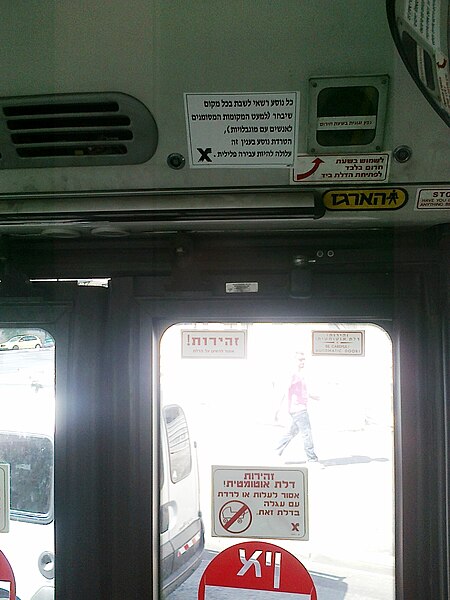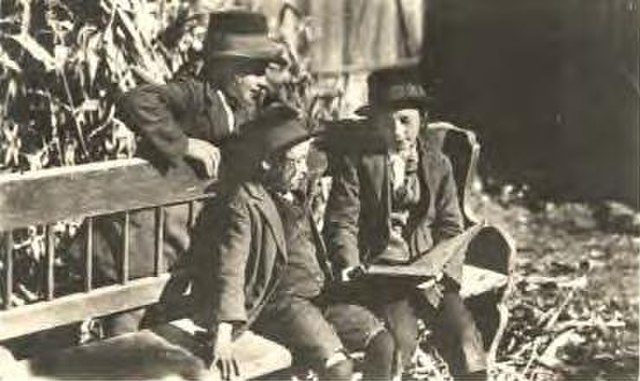Mehadrin bus lines were a type of bus line in Israel that mostly ran in and/or between major Haredi population centers and in which gender segregation and other rigid religious rules observed by some Haredi Jews were applied from 1997 until 2011. In these sex-segregated buses, female passengers sat in the back of the bus and entered and exited the bus through the back door if possible, while the male passengers sat in the front part of the bus and entered and exited through the front door. Additionally, "modest dress" was often required for women, playing radio channels or secular music on the bus was avoided, while advertisements were censored. Mehadrin lines were generally cheaper than other lines. In early 2010, there were 56 Mehadrin buses in 28 cities across Israel operated by public transportation companies, although usually not specifically labelled.
A Dan bus labeled "mehadrin" which served the Haredi neighborhoods in the city of Bnei Brak. Photo taken in January 2006
Sticker at top reads: "Every passenger may sit wherever s/he chooses (except seats designated for disabled persons), harassing a passenger in this regard may be a criminal offense". (June 2011)
Haredi Judaism consists of groups within Orthodox Judaism that are characterized by their strict interpretation of religious sources and their accepted halakha and traditions, in opposition to more accommodating or modern values and practices. Its members are usually referred to as ultra-Orthodox in English; however, the term "ultra-Orthodox" is considered pejorative by many of its adherents, who prefer terms like strictly Orthodox or Haredi. Haredi Jews regard themselves as the most religiously authentic group of Jews, although other movements of Judaism disagree.
Haredi Jewish men during a Torah reading
Young Haredi Jews in Jerusalem, 2005
Hasidic boys in Łódź, 1910
Haredi Jews from Galicia at the Karmelitermarkt [de] in Vienna's second district, Leopoldstadt, 1915






![Haredi Jews from Galicia at the Karmelitermarkt [de] in Vienna's second district, Leopoldstadt, 1915](https://upload.wikimedia.org/wikipedia/commons/thumb/0/02/Orthodox_Jews_in_Leopoldstadt_1915.JPG/640px-Orthodox_Jews_in_Leopoldstadt_1915.JPG)